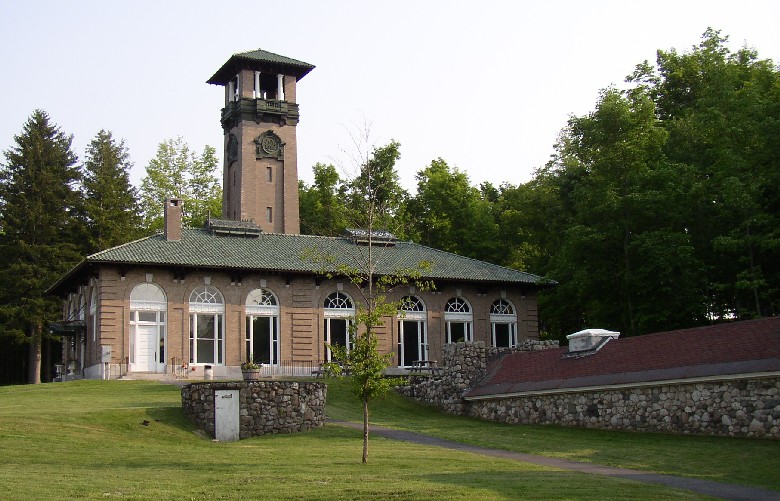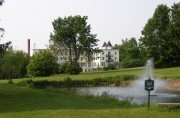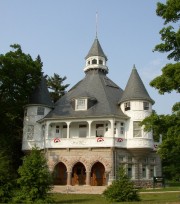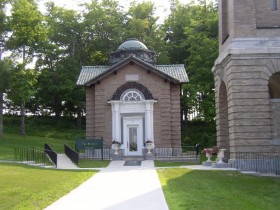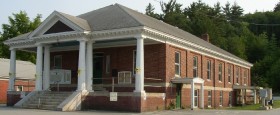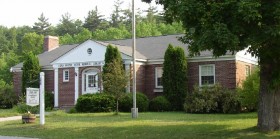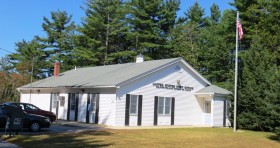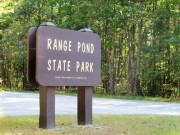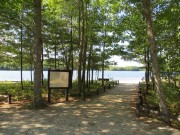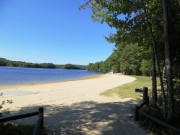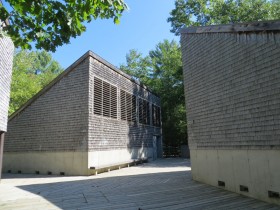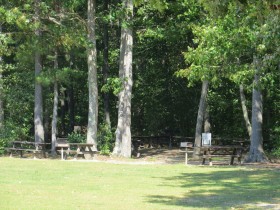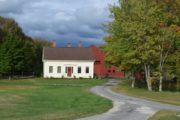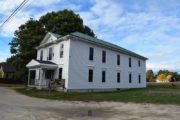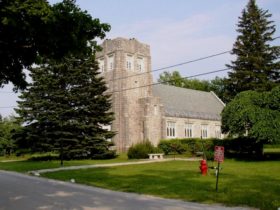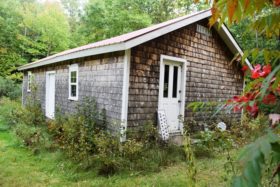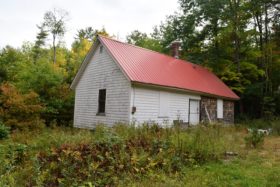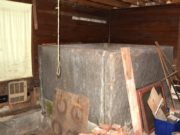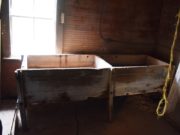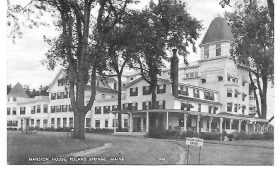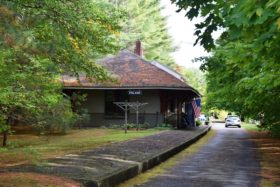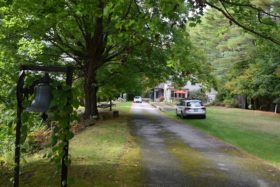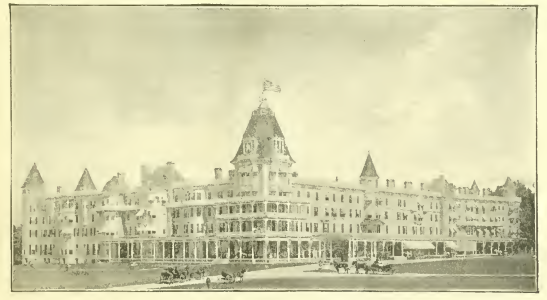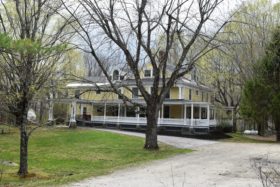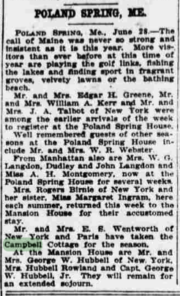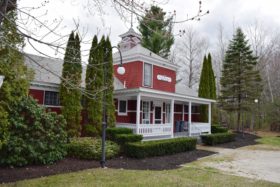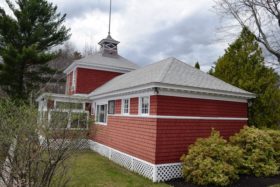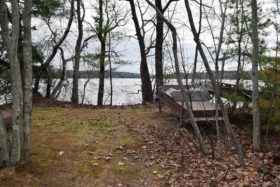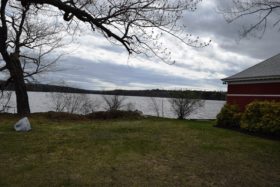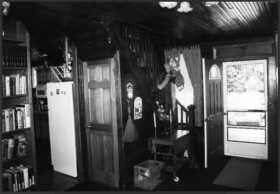| Year | Population |
|---|---|
| 1970 | 2,015 |
| 1980 | 3,752 |
| 1990 | 4,342 |
| 2000 | 4,866 |
| 2010 | 5,376 |
| Geographic Data | |
|---|---|
| N. Latitude | 44:02:57 |
| W. Longitude | 70:23:29 |
| Maine House | Dists 65,66 |
| Maine Senate | District 20 |
| Congress | District 2 |
| Area sq. mi. | (total) 47.2 |
| Area sq. mi. | (land) 42.3 |
| Population/sqmi | (land) 127.1 |
County: Androscoggin
Total=land+water; Land=land only |
|
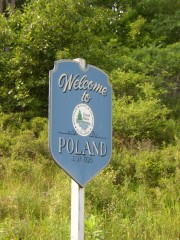 [POLE-nd] is a town in Androscoggin County, settled in 1768 and incorporated on February 17, 1795 from Bakerstown Plantation. It set off land to form Minot in 1802, and ceded other land to the following: Danville (1851), Otisfield and Casco (1858), and Mechanic Falls (1893).
[POLE-nd] is a town in Androscoggin County, settled in 1768 and incorporated on February 17, 1795 from Bakerstown Plantation. It set off land to form Minot in 1802, and ceded other land to the following: Danville (1851), Otisfield and Casco (1858), and Mechanic Falls (1893).
It was home to a famous resort and its Poland Spring House, which as destroyed by fire on July 4, 1975. As early as 1796 the “Mansion House” was opened as a hotel. When the grandson of the owner claimed it had cured him of “a chronic dyspepsia,” and the guests began praising the water, the local spring became a major attraction.
The Maine State Building was built to represent the state at the Chicago World’s Fair, known as the Colombian Exposition, in 1893. The building was disassembled, shipped back to Maine, and reconstructed.
The Poland Spring Bottling Plant and Spring House are local landmarks. Since most of the company’s water no longer comes from the Spring House, or any other conventional spring, the firm has been urged to disclose its water sources.
The Poland Spring area, in the southern portions of the town of Poland, is surrounded by several lakes and has been a resort area for over 200 years.
The town, just west of Auburn, has two other large lakefront areas and is served by Maine Routes 11,26, 122.
One of the water bodies is home to Range Pond State Park. [pronounced “rang” pond]
The State Park borders Lower Range Pond near Poland Spring. Middle and Upper Range Ponds stretch further south. (See the Poland Spring Beach House below on Middle Range Pond.)
Form of Government: Town Meeting-Select Board-Manager.
Two villages, Poland and South Poland are west of the range lakes. Away from the “Spring” area rural images help round out the nature of Poland Maine.
Additional Resources Click on images to enlarge and clarify.
“Facts and Fancies at Poland Spring.” The Hill Top. Vol. 1, No. 1, July 8, 1894.
**Harris, Brian. “All Souls Chapel at Poland Spring.” http://baharris.org/historicpolandspring/AllSoulsChapel/Chapel.htm (accessed February 5, 2017)
https://archive.org/stream/hilltop04sout/hilltop04sout_djvu.txt (accessed December 17, 2015)
From Dreamland Sent [moving image recording]: A History of the Maine State Building 1893-1995. Produced by Patricia Shearman. Poland Spring, Me. Poland Spring Preservation Society. c1995. (Cataloger Note: The Maine State Building was the showpiece for the centennial celebration in 1895. Although the Ricker’s Poland Spring Resort has largely disappeared, the Maine State Building survives as a tangible reminder of 200 years of life on Ricker Hill.) [University of Maine, Raymond H. Fogler Library]
Levy, Eliot. “Poland Spring Preservation Society.” Maine Archives and Museums Newsletter. August, 2003. p. 15.
*Maine. Historic Preservation Commission. Augusta, Me. Text and photos from National Register of Historic Places:
Libby, Jason C. Poland Spring. Poland Spring Preservation Society. Arcadia Publishing. July 1, 2009. https://books.google.com/books?id=5bJAu56KloUC&dq=%22campbell+cottage%22+%22poland+spring%22&source=gbs_navlinks_s
Ricker, Alvan B. Poland Centennial, September 11, 1895: With Illustrations and Biographical Sketches. New York. Printed by Andrew H. Kellogg. 1896.
Mansion House, Poland Spring: Open All Year, Established. 1794. South Poland, Me. Hiram Ricker & Sons. [between 1913 and 1925]
Poland Mineral Spring Water: The Story of its History and its Marvellous Curative Properties. South Poland, Me. Hiram Ricker & Sons. c1883. [University of Maine, Raymond H. Fogler Library, Special Collections]
“Poland Spring.” The Brooklyn Daily Eagle. Brooklyn, NY. July 4, 1909. p. 29. https://www.newspapers.com/newspage/53880442/ (accessed April 30, 2017)
Richards, David. Poland Spring: A Tale of the Gilded Age, 1860-1900. Durham, N.H. University of New Hampshire Press; Hanover, N.H. Published by University Press of New England. c2005.
Summit Spring House (on hill top), Poland, Maine: Switzerland of America. Geo. H. Davis, Proprietor. ca. 1890? [University of Maine, Raymond H. Fogler Library, Special Collections]
National Register of Historic Places – Listings
Photos, and edited text are from nominations to the National Register of Historic Places researched by Maine. Historic Preservation Commission.
Full text and photos are at https://npgallery.nps.gov/nrhp
All Souls Chapel
The idea of a chapel was first proposed around 1885. Held, at first, outdoors, it became necessary to find shelter in case of rain. When meetings were transferred to the dining hall, guests of the hotel began to attend and added to the Chapel Fund. Local families and hotel guests raised approximately $15,000, and the Ricker family contributed an equal amount.
All Souls Chapel was designed in Early Norman and Gothic style by Boston architect G. Henri Desmond, who presented the plans to the Rickers as a gift. The opening service was on September 1, 1912.*
Excelsior Grange # 5
The Excelsior Grange #5 has served the town of Poland since 1914.Built in that year to replace an earlier grange hall that had burned, the two story building has restrained Georgian Revival stylistic details on the exterior and the functional interior plan common to many Grange buildings. It is one of a very few architect-designed granges in Maine and is probably the only grange designed by the Lewiston based architect Harry S. Wilkinson, who was a Poland native. Throughout the 19th and first half of the 20th centuries the Grange, or Patrons’ of Husbandry, was an important social organization with an emphasis on agricultural education and progressive community and social activities. Ultimately 588 individual Granges were established in Maine between 1873 and 1985 – but the focus of each Grange was on assisting the local communities. Not only was the Grange Hall a place for the grange members to hold their meetings, in many communities, including Poland, it became a center for community activity. Although interest in the Grange began to wane after World War II, the Poland chapter remains active and it also has an important role as a Pomona Grange, a regional level of the organization that has oversite of subordinate granges in the area..
Keystone Mineral Springs
[Keystone Road] The Keystone Mineral Spring facilities in East Poland are rare surviving examples of the19th and early 20th century water bottling industry in Maine. With the exception of the famous and ornate Spring House and Bottling Plant at the nearby Poland Spring facility, the two buildings that comprise Keystone are the only known examples of period water extraction facilities in Maine.
Keystone Springs water was drawn and distributed almost continually from 1885 to the mid 1990s using the original Spring House (c.1885) and the Bottling House that was rebuilt after a fire in 1928. Adding to its significance is the large stock of bottling supplies, (including original glass bottles and carboys), and packaging and distribution equipment dating to the early 20th century. Taken together, the Springs provide an unparalleled access to the early years of an important statewide industry.
The site of the Springs is part of E. Greenleaf Woodman’s home farm in East Poland. He lived there through at least 1880. By 1884 the property was owned by Seriah Pratt, who recognized the potential in the spring water that emerged from a rock in his back yard. He found that the water from the Spring was comparable to that of the Poland Spring water and started selling it in 1884 and continued until 1892 when it was bought by Edward Pratt and his brother-in-law, Abe J. Anderson. From then until 1896 the Keystone Spring was operated by Pratt and Anderson. In 1896 Edward Pratt bought out Anderson. During that period and several years following, the water was sold extensively in Lewiston and Auburn and surrounding areas, and even shipped some to Portland and New Jersey.
In 1928 the bottling house was destroyed by fire. At this time, Mr. Pratt leased the business to Harold (Red) Lothrop. The bottling house was rebuilt on the same site and the same size, completed in 1929. The Spring changed ownership several times until the business closed in the mid-20th century. The farmstead, with the spring facilities, is now privately owned, while complex retains the integrity of its earlier historic context.*
Maine State Building
[Poland Spring] In 1892, an International Exposition opened in Chicago to celebrate the 400th anniversary of the discovery of America by Christopher Columbus. Maine’s response to the Exposition was an irregularly shaped Queen Anne type structure the shape of which was dictated by the irregular lot assigned to it in the exposition. The architect chosen for the building was Lewiston native Charles Summer Frost who had achieved a national reputation for his buildings in Chicago.
When the Exposition ended, Maine offered it to the Chicago park commission. They could not accept it but several parties made offers to purchase the building. The building committee sold the building to Hiram Ricker and Sons, owners of the Poland Spring summer resort. A sixteen car train brought the building piece by piece. It was finally reconstructed in front of an oak grove beside the Grand Hotel at Poland Spring. On July 1, 1895, the building was dedicated as a library and arts building and thereafter advertised as an additional attraction to this famous watering place of the turn of the century leisure class.*
Poland Railroad Station
The Maine Central Railroad Station in Poland is significant as probably the best preserved specimen of standard turn of the 20th century station architecture in Maine. It is also the finest example of several railroad buildings in the state that have been converted for residential use. This particular adaptive reuse has been done with great concern for the architectural and historic elements and offers hope for long term preservation of the building.
The station was built on a branch line of the Grand Trunk Railroad constructed in 1894 to serve the great Poland Spring House resort. This branch left the main line at Lewiston Junction and with stations at Empire, Poland Spring and Poland rejoining the Grand Trunk Railroad at Mechanic Falls. The line was owned by the Maine Central Railroad.*
While the National Register lists it as at “Harris Hill and Plain Roads” its actual location in 2016 is off the Plains Road near its intersection with the Poland Corner Road.*
Poland Spring Historic District
The Poland Spring Historic District is a recreational resort complex with historic significance in health and medicine, entertainment and recreation, and industry. With roots in the hospitality industry that stretched to 1794, the resort reached its heyday in size, popularity and reputation between 1876 and 1933. It now contains 30 buildings or other historic resources either built or associated with the resort during that period. These include the Maine State Building and the Bottling Plant and Spring House.
To be didactic is to say that Poland Spring, whose portrait is herewith, is lovelier far than any other spot on earth, in summer I have fancied this hill a dome rimmed with lakes set in a valley so wide and far-stretching that its sides seem only the canvas for the sky to paint its pictures on. We sit on the veranda at sun set. The winds stir oaks and maples in the groves that are near by and that vitalize the air. The broad verandas, over half a mile in length, are filled with guests
The lights twinkle in the corridors, within, and along the polished floor. The music comes in occasional bursts of melody. The day dies down at out feet, first on the distant lakes, then on the tufted lawn, where the clover blossoms scent the air. The high urns full of flowers become spectral, the fountains are mist-wraiths, and the latest coach tools home with sound of the horn. Night comes placidly at the New England country-side. [from The Hill Top, July 8, 1894]
The resort was an important aspect of the emerging tourism industry in Maine in the 1870s. The spring water bottled at the resort was renowned first in the northeast and then nationally, both for its taste and curative powers. Its water bottling and distribution operation enabled a family-owned water source to evolve into one of the most important leaders in the industry into the 21st century.*
Campbell Cottage was owned by one of the investors in the Wampole Spring Water Company. Purchased by the Rickers in the early 1900s, it was used by distinguished resort guests and by the Ricker family. As the Brooklyn Daily Eagle article noted, the Cottage was actively used in 1909: “Mr. and Mrs. E. W. Wentworth of New York and Paris have taken the Campbell Cottage for the season.” (click article to enlarge)
Poland Spring Beach House
[Maine Route 26, 0.1 mile east of junction with Skellinger Road South Poland; N44° 2′ 20.21″ W70° 22′ 33.00″] Built in 1909, the former Poland Spring Beach House served the purpose of a lakeside recreation facility for guests of the Poland Spring resort, located on a hill about one mile to the southeast.
The beach house (also referred to as the bath-house) is at Middle Range Pond. It was described in 1932 as
really more than [a bath house]: perhaps clubhouse would be a better name —built out into the water. And, although it isn’t new, a certain tasteful skill has made such a transformation that it will hardly be recognized by guests of former years. Baskets of ferns, and beds of geraniums, petunias and other bright-hued plants, make banks of color at the entrance. Within are twenty-five lockers, which may be rented by the day or week, with bathing suits if desired; and there also is a cozy little room, suited for bridge or small afternoon teas. But the feature of this clubhouse is its veranda ~ nearly one hundred feet long and built directly over the water. Here there is room for ten card tables, and a more uniquely lovely setting for a bridge party could hardly be imagined…. On the roof of this veranda, and reached by a ladder, are a few card tables exclusively for men ~ the only Eve-less spot we know in this Poland Spring Eden!
The Beach House was originally built on pontoons and moved out a short distance into the lake where it was surrounded by floats. During the 1930s the building was moved permanently to the shore and its present site. It continued to be used for its original purpose until the 1970s, when a number of the interior partition walls were removed. Its was converted to a summer residence in the early 1980s. The former Poland Spring Beach House is important not only for its association with the extensive Poland Spring resort, but also as a relatively intact example of a specialized recreational building.* [Kirk F. Mohney 1999 photo]
Poland Spring Bottling Plant and Spring House
[Ricker Road] The Poland Spring, known since the mid-18th century, was the principal reason for establishing the world famous resort founded by the Ricker family, symbolized by the great Poland Spring House hotel that burned in 1975. The bottling plant and spring house are monuments to the great summer hotel that served a stellar clientele.
Founder Jabez Ricker came to Poland Spring in 1794 with his son Wentworth. They built the first hostelry on the property in 1797, the Mansion House. In 1800 Jabez became ill; his case was declared hopeless. But after having drunk copiously from the spring nearby, he made an apparently miraculous recovery. From that time the spring’s reputation for supposed medicinal properties grew until it became world renowned and the Poland Spring House, built in 1876 by Hiram Ricker, Wentworth’s son, became a watering place equal in reputation to any of the great European spas.
Although the great hotel is gone, the original 1907 bottling plant remains. (See photos above.) Poland Spring bottled water is now extremely popular. Beside the plant stands the spring house, lavishly designed to accommodate hotel guests “taking the waters”. Harry C. Wilkinson, the architect of both structures grew up as a boy in Poland, Maine, and was known to the Ricker family. After a year’s experience with a small architectural firm in Lewiston he went to Washington to become a draftsman in the office of the Supervising Architect of the U. S. Treasury Department. While there he studied pen and ink drawing and became well-known for his renderings in this medium. In 1903, when Edward P. Ricker, Hiram’s son, began to consider the erection of a formal spring house and bottling plant, he wrote to Wilkinson asking for a design. After much correspondence, he completed the final plans which were carried out in 1907.*


